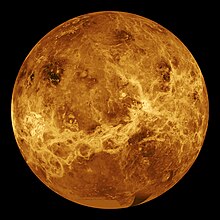SPACE.com: http://www.space.com/19201-most-earth-like-alien-planet.html

A possible alien planet discovered by NASA's Kepler space telescope is the most Earth-like world yet detected beyond our solar system, scientists say.
With a radius that is just 1.5 times that of Earth, the potential planet is a so-called "super-Earth," meaning it is just slightly larger than the Earth. The candidate planet orbits a star similar to the sun at a distance that falls within the "habitable zone" — the region where liquid water could exist on the planet's surface. Scientists say the planet, if confirmed, could be a prime candidate to host alien life.


